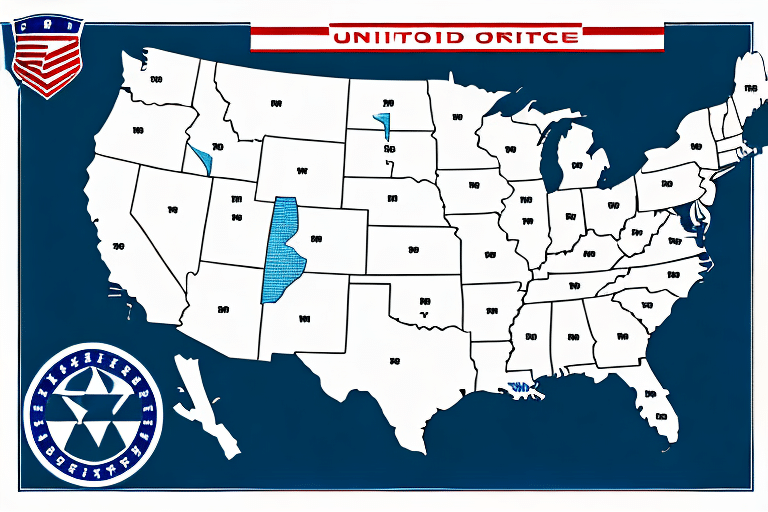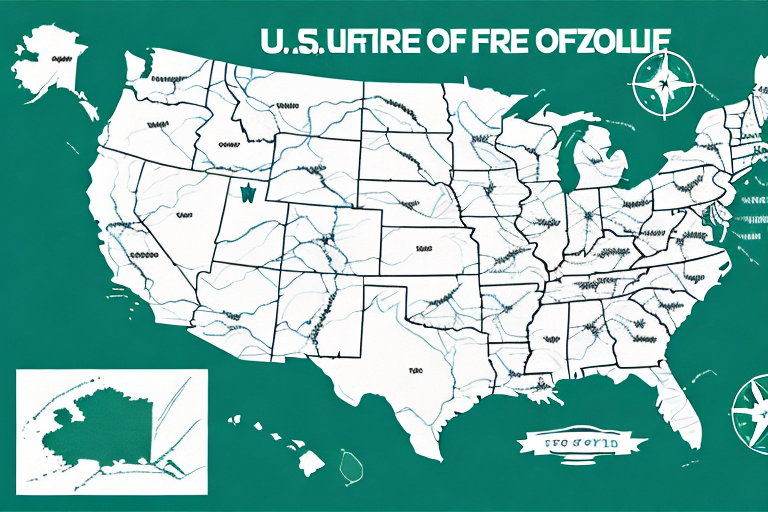Understanding the USPS Domestic Zone Chart
The United States Postal Service (USPS) remains a cornerstone for shipping within the United States, offering reliable and cost-effective solutions for both businesses and individuals. However, navigating USPS shipping rates can be complex, particularly for those new to the shipping landscape. Central to USPS shipping rates is the USPS Domestic Zone Chart, an essential tool for determining shipping costs based on several key factors.
What is the USPS Domestic Zone Chart?
The USPS Domestic Zone Chart is a strategic tool used to calculate shipping costs by assessing the distance between the shipment's origin and destination. This chart categorizes locations into different zones, which, along with the package weight, determine the shipping rates. By utilizing this chart, businesses and individuals can identify the most cost-effective methods for shipping their packages.
It's important to recognize that the USPS Domestic Zone Chart is updated annually to reflect changes in factors like fuel prices and inflation. Regularly consulting the latest chart ensures accurate shipping rates. Additionally, USPS provides discounts for frequent shippers, making it beneficial for businesses to consider opening a business account to further reduce shipping expenses.
Importance of the USPS Domestic Zone Chart for Businesses
For businesses that consistently ship products, the USPS Domestic Zone Chart is invaluable. It allows for precise calculation of shipping fees, aiding in accurate budgeting and financial planning. Understanding shipping costs in advance helps businesses manage expenses and optimize their pricing strategies.
Moreover, the chart enables businesses to offer transparent and precise shipping estimates to customers. This transparency enhances customer trust and satisfaction by providing clear information on shipping costs and expected delivery times.
Beyond cost management, the USPS Domestic Zone Chart assists businesses in making strategic decisions about expanding operations. By analyzing zone-related shipping costs, businesses can identify optimal locations for warehouses or distribution centers, thereby reducing shipping expenses and improving delivery efficiency.
How to Read the USPS Domestic Zone Chart
Interpreting the USPS Domestic Zone Chart requires knowing the zip codes of both the origin and destination, the USPS service type, and the package's weight. The chart is divided into zones numbered typically from 1 to 9, representing varying distances between zip codes.
To determine the appropriate zone, match the origin and destination zip codes with the zones listed on the chart. Once the zone is identified, combine it with the package's weight and chosen USPS service to find the corresponding shipping cost. It's crucial to use the most recent version of the chart to ensure accuracy, as USPS services may have specific restrictions or updates each year.
Overview of USPS Zones in the Domestic Zone Chart
The USPS Domestic Zone Chart comprises nine distinct zones:
- Zone 1: Shortest distance
- Zone 9: Longest distance
Each zone has a unique pricing structure, with costs increasing as the zone number rises. For instance, shipping to a Zone 9 destination will cost more than shipping to a Zone 1 destination. This tiered pricing ensures that shipping costs accurately reflect the distance and associated logistics.
It's vital to stay updated with annual changes to the zone definitions and pricing. Additionally, certain USPS services, such as Priority Mail Express, may have separate pricing structures that deviate from the standard zone-based rates.
Understanding Zone-Based Pricing for USPS Shipping
Zone-based pricing is a foundational concept in USPS shipping, where costs escalate with the distance between the shipment's origin and destination zip codes. Each zone represents a range of distances, with higher zone numbers indicating longer distances and consequently higher shipping costs.
While zone-based pricing is a significant factor, other elements like package weight, dimensions, and desired shipping speed also influence the total cost. USPS offers various services, such as Priority Mail and First-Class Mail, each with its own pricing tiers and benefits.
To optimize shipping expenses, it's essential to consider all these factors collectively. Leveraging available discounts and selecting the appropriate USPS service can lead to substantial savings while ensuring timely delivery.
Calculating Shipping Costs with the USPS Domestic Zone Chart
Accurately calculating shipping costs involves several steps:
- Identify the origin and destination zip codes.
- Determine the corresponding zones from the USPS Domestic Zone Chart.
- Assess the package's weight and choose the USPS service type.
- Use the USPS website's postage calculator or a reliable postage calculator tool to find the exact shipping cost.
Keep in mind that the USPS Domestic Zone Chart is subject to annual updates. Additionally, exploring flat-rate options like those offered in Priority Mail Flat Rate can sometimes provide more cost-effective solutions, especially for heavier packages.
Strategies for Managing Shipping Costs with the USPS Domestic Zone Chart
Effective management of shipping costs involves several strategic approaches:
- Consolidate Shipments: Combining multiple packages headed to the same destination can reduce overall shipping fees.
- Select Appropriate USPS Services: Choosing the right service based on package size, weight, and delivery timeline can optimize costs.
- Take Advantage of Discounts: Utilize available USPS discounts and promotions, such as bulk mailing rates or free shipping supplies.
- Accurate Packaging: Ensure packages are accurately weighed and measured to avoid unexpected costs. Investing in reliable scales and measuring tools is advisable.
Implementing these strategies can lead to significant savings and more efficient shipping operations.
Common Mistakes to Avoid with the USPS Domestic Zone Chart
To ensure accurate shipping cost calculations, avoid these common pitfalls:
- Incorrect Zip Codes: Using wrong or outdated zip codes can lead to inaccurate zone and cost determinations.
- Neglecting Weight and Dimensions: Failing to account for the package's weight and size can result in unexpected additional charges.
- Ignoring Additional Fees: Some items may incur extra fees due to special handling or packaging requirements. Always review USPS guidelines for restricted or prohibited items.
By being mindful of these potential mistakes, shippers can ensure smoother operations and avoid unnecessary expenses.
Optimizing Your Shipping Strategy with the USPS Domestic Zone Chart
To maximize efficiency and cost-effectiveness in shipping, consider the following optimization techniques:
- Analyze Shipping Patterns: Regularly review shipping data to identify high-cost zones and strategize accordingly.
- Choose Cost-Effective Packaging: Utilize flat-rate boxes for heavy items or lightweight packaging materials to reduce overall package weight.
- Implement Shipping Software: Employ third-party shipping software to compare rates across multiple carriers, automate label printing, and track packages efficiently.
By integrating these practices, businesses and individuals can streamline their shipping processes, reduce costs, and enhance delivery performance.
In summary, the USPS Domestic Zone Chart is an essential tool for anyone involved in shipping within the United States. Understanding its mechanisms and leveraging it effectively can lead to significant savings and improved shipping efficiency. Stay informed about annual updates, utilize available resources, and adopt strategic practices to optimize your shipping strategy and achieve better business outcomes.






















